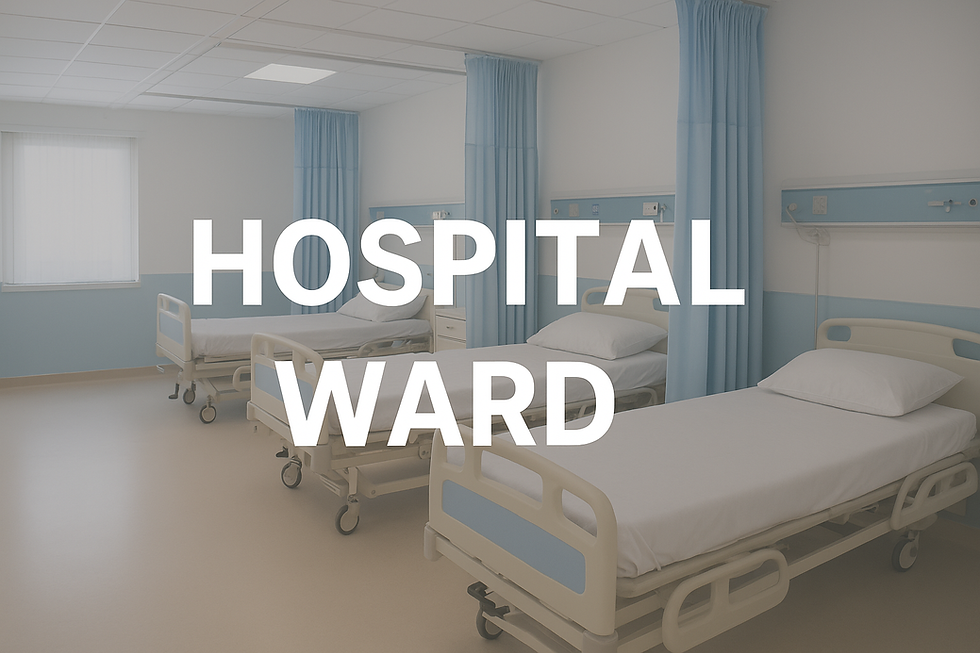AI-Enabled Smart Beds - Revolutionising Patient Monitoring and Care Efficiency
- Dhruv Dixit
- Jun 2
- 4 min read
Healthcare infrastructure is no longer limited to bricks, beds, and basic technology. It’s evolving, quietly but powerfully, with the rise of intelligent, data-driven systems that not only support medical personnel but redefine patient experiences altogether. Among the game-changers in this silent revolution are AI-enabled smart beds.

These aren’t just adjustable platforms for resting patients, they’re sophisticated, responsive hubs of data collection, decision support, and patient safety mechanisms. Especially in fast-paced medical environments like ICUs, surgical wards, or rehabilitation units, the integration of artificial intelligence into hospital beds has opened a new dimension in care delivery. The benefits are multi-layered, from streamlining clinical workflows to reducing errors and enabling real-time monitoring. The technology, once considered futuristic, is now turning routine interactions into precise, proactive healthcare moments.
Let’s understand how these smart beds are creating ripple effects across hospital wards and redefining operational and clinical outcomes.
The role of AI-enabled smart beds in improving care efficiency
Enhancing Real-Time Patient Monitoring Beyond Traditional Parameters
Most hospital beds traditionally serve static functions, which include supporting the body, offering mechanical adjustments, and facilitating mobility. But AI-enabled smart beds do far more. Embedded sensors capture a patient’s vital signs such as heart rate, respiratory rate, and even subtle movement patterns like micro-shifts in weight or posture. This data is continuously analysed, offering insights that nurses or doctors might otherwise miss in between rounds.
More importantly, these beds communicate in real time with hospital information systems. The moment a patient’s vitals deviate from normal thresholds, alerts are triggered, allowing for early intervention. It eliminates the lag between the onset of a complication and clinical response. This constant, low-intrusion monitoring ensures patients are never truly unattended, even when staff are not physically present at the bedside.
Minimising Risk Through Fall Detection and Movement Intelligence
Patient falls are among the most common safety incidents in hospitals, especially among the elderly or post-surgical populations. In smaller wards where staff resources are stretched, preventing such incidents becomes even more difficult. AI-powered smart beds are addressing this concern by actively interpreting patient movement.
Equipped with motion sensors and intelligent algorithms, these beds can differentiate between regular shifting and movements that suggest a patient is attempting to get up unassisted. The system promptly sends alerts to nurses, enabling staff to intervene before an accident occurs. Some models even adjust bed angles or lock mobility features automatically when risky behaviour is detected.
This not only safeguards the patient but also reduces liability risks for hospitals, supporting stronger compliance with patient safety standards.
Improving Sleep Quality and Recovery Rates Through Responsive Adjustments
Rest is a non-negotiable requirement of healing, but sleep in hospitals is frequently disrupted by discomfort, alarms, or staff check-ins. Smart beds aim to change this dynamic. By using AI to interpret body pressure and shifting patterns, the bed can autonomously adjust its firmness, tilt, or positioning to maintain optimal comfort.
In some models, micro-vibrations or integrated massage mechanisms are used to stimulate circulation in immobilized patients, helping prevent pressure ulcers and blood clots. For recovering patients, especially those post-operation, such comfort-driven automation contributes significantly to both emotional well-being and physiological healing.
Optimising Nursing Efficiency Through Data Integration and Task Automation
Time is one of the most precious resources for any nurse in a high-demand clinical setting. Smart beds equipped with AI reduce the manual burden of data entry, patient checks, and mobility assistance. Many models directly feed patient data into the hospital’s digital health records, ensuring clinicians always have the most current information without repeated manual inputs. In critical care settings, where every minute matters, these backend automations make a visible difference.
Supporting Posture Therapy and Rehabilitation Goals
In orthopaedic, stroke, or neurological recovery wards, posture and mobility therapy are crucial. Some smart systems can be programmed to change patient positions at specific intervals, support weight-shifting exercises, or enable self-initiated mobility movements. The integration of AI allows the bed to learn patterns and adapt therapy based on the patient’s tolerance and progress. This not only supports physiotherapists but also supports patients, making them active participants in their recovery journey.
Personalizing Patient Experience Without Adding Complexity
Despite their technological sophistication, smart beds are designed to be intuitive. With voice-activated controls, touch panels, and pre-set comfort modes, even elderly or semi-conscious patients can personalise their bed settings. When paired with multilingual voice assistants or mobile app integrations, patients feel more in control, which boosts morale and satisfaction.
For caregivers, especially in pediatric or geriatric wards, the customisation features remove guesswork and reduce anxiety for both patient and family. As a result, care becomes more human-centred even while being driven by advanced technology.
Reducing Physical Strain on Staff and Boosting Occupational Health
Caregivers often suffer from musculoskeletal injuries caused by repetitive lifting, turning, or adjusting of patients. AI-enabled beds reduce these risks significantly. With automated tilt functions, height adjustments, and repositioning controls, a single caregiver can perform tasks that earlier needed two or more people.
In busy wards or facilities with ageing staff populations, this alleviation of physical load can improve occupational health, reduce sick days, and improve long-term workforce sustainability. It’s not just the patient who benefits; the staff’s well-being becomes a tangible metric of success.
Why Aslams Is a Trusted Partner for Futuristic Smart Hospital Furniture
As one of the best hospital bed manufacturers, at Aslams, we understand that intelligent healthcare begins at the bedside. Our smart hospital furniture, including beds equipped with futuristic features and technologically advanced surgical trolleys, is crafted to meet the evolving demands of modern care environments.
We, as reliable hospital bed suppliers, prioritise safety and durability, making our offerings ideal for hospitals looking to future-proof their infrastructure. With a focus on precision engineering and compliance with medical-grade standards, Aslams provides more than just equipment, we provide adaptive solutions for next-generation care.
When care needs to be proactive, precise, and personal, our solutions deliver exactly that.




Comments